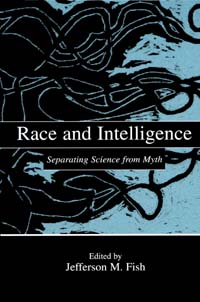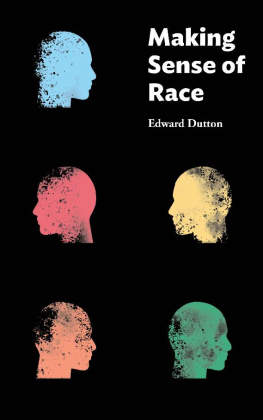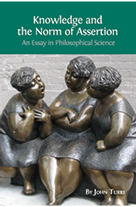Cover

| title | : | Race and Intelligence : Separating Science From Myth |
| author | : | Fish, Jefferson M. |
| publisher | : | Lawrence Erlbaum Associates, Inc. |
| isbn10 | asin | : | 0805837574 |
| print isbn13 | : | 9780805837575 |
| ebook isbn13 | : | 9780585385433 |
| language | : | English |
| subject | Intellect, Race, Intelligence levels--Social aspects, Intelligence tests--Social aspects. |
| publication date | : | 2002 |
| lcc | : | BF431.R27 2002eb |
| ddc | : | 305.9/082 |
| subject | : | Intellect, Race, Intelligence levels--Social aspects, Intelligence tests--Social aspects. |
Page i
R ACE AND I NTELLIGENCE
Separating Science From Myth

Page ii
This page intentionally left blank
Page iii
R ACE AND I NTELLIGENCE
Separating Science From Myth

Edited by
Jefferson M. Fish

Page iv
Copyright 2002 by Lawrence Erlbaum Associates, Inc.
All rights reserved. No part of this book may be reproduced in
any form, by photostat, microfilm, retrieval system, or any other
means, without prior written permission of the publisher.
Lawrence Erlbaum Associates, Inc., Publishers
10 Industrial Avenue
Mahwah, NJ 07430
| Cover design by Kathryn Houghtaling Lacey |
Library of Congress Cataloging-in-Publication Data
Race and intelligence : separating science from myth / edited
by Jefferson M. Fish.
p. cm.
Includes bibliographical references and index.
ISBN 0-8058-3757-4 (cloth : alk. paper)
1. Intellect. 2. Race. 3. Intelligence levelsSocial aspects
4. Intelligence testsSocial aspects. I. Fish, Jefferson M.
| BF431 .R27 2001 |
| 305.9082dc21 | 00-033164 |
| CIP |
Books published by Lawrence Erlbaum Associates are printed on
acid-free paper, and their bindings are chosen for strength and
durability.
Printed in the United States of America
10 9 8 7 6 5 4 3 2 1
Page v
To Dolores
and Krekamey
Page vi
This page intentionally left blank
Page vii
Contents

Preface | xi |
Contributors | xvii |
| A Scientific Approach to Understanding Race
and Intelligence Jefferson M. Fish | |
Part I Homo sapiens has no extant subspecies: There are no biological races.Human physical appearance varies gradually around the planet, with the most geographically distant peoples generally appearing the most different from one another. The concept of human biological races is a construction socially and historically localized to 17th anal 18th-century European thought. Over time, different cultures have developed different sets (folk taxonomies) of socially defined races. |
| The Genetic and Evolutionary Significance
of Human Races Alan R. Templeton | |
Page viii
| The Misuse of Life History Theory: J. P. Rushton
and the Pseudoscience of Racial Hierarchy Joseph L. Graves, Jr. | |
| Folk Heredity Jonathan Marks | |
| The Myth of Race Jefferson M. Fish | |
Part II Racial categories are developed to serve social ends, including the justification and perpetuation of inequality. IQ testing has been a part of this process of stratifying groups. |
| Science and the Idea of Race: A Brief History Audrey Smedley | |
| The Bell Curve and the Politics of Negrophobia Kimberly C. Welch | |
Part III Cultural content, values, and assumptions are an inherent part of IQ tests. Formal schooling teaches people new ways of thinking, which are then measured by the tests. Access to schools, school quality, modes of instruction, attitudes toward formal education, and educational values vary cross-culturally. |
| An Anthropologist Looks at Race and IQ Testing Mark Nathan Cohen | |
Page ix
| African Inputs to the IQ Controversy, or Why
Two-Legged Animals Cant Sit Gracefully Eugenia Shanklin | |
| Cultural Amplifiers of Intelligence: IQ and Minority 241
Status in Cross-cultural Perspective John U. Ogbu | |
Part IV Biological-sounding concepts, especially heritability, have been misused to imply a genetic basis for group differences in IQ scores. There are many cognitive abilitiesa single general factor of intelligence is inadequate to account for current knowledge in psychological measurement or cognitive science. |
| How Heritability Misleads About Race Ned Block | |
| Selections of Evidence, Misleading Assumptions,
and Oversimplifications: The Political Message
of The Bell Curve John L. Horn | |
Part V A wide variety of data, including reanalyses of data presented in The Bell Curve , imply that group differences in IQ are social in origin and can change as the result of changing social circumstances or social interventions. |
| Test Scores, Education, and Poverty Michael Hout | |
Page x
| Intelligence and Success: Is it All in the Genes? Bernie Devlin, Stephen E. Fienberg, Daniel P. Resnick,
and Kathryn Roeder | |
| Compensatory Preschool Education, Cognitive
Development, and Race W. Steven Barnett and Gregory Camilli | |
Author Index | |
Subject Index | |
Page xi
Preface

R ace and Intelligence: Separating Science From Myth is a comprehensive response to claims of differences in innate intelligence between the races. It differs in two important ways from other works on the topic, which tend to be limited to a discussion of IQ in the United States. First, this book discusses in great detail the concept of race, shows why it has no biological basis, explains the nature of human physical variation, and discusses the history and cross-cultural variability of conceptions of race. Second, in addition to discussing the United States in detail, it considers the measurement of intelligence and the use of IQ tests from a global perspective.
Next page











